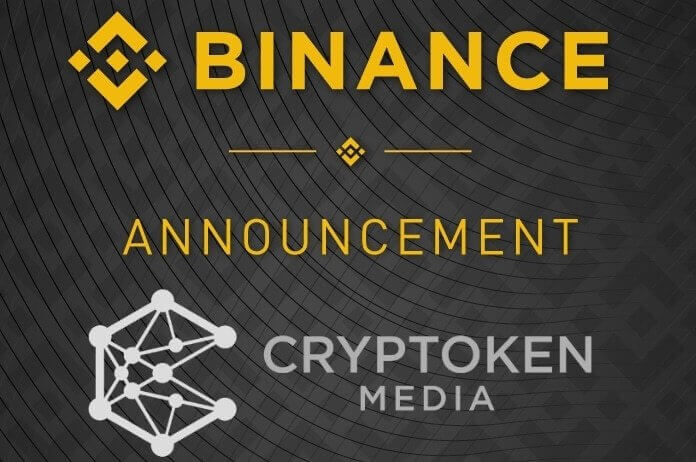The rapid evolvement of blockchain technology in the past couple of years diversified the sector through many different platforms, such as centralized crypto exchanges and decentralized finance platforms. DeFi protocols offer enhanced flexibility to users and real project governance which lacks on most centralized exchanges and crypto projects.
Ethereum Blockchain and DeFi
A large portion of the DeFi growth and a backbone of DeFi is Ethereum`s blockchain, used to power most projects. The use of Ethereum’s blockchain, however, imposes some challenges among DeFi users. Ethereum’s blockchain uses а Proof-of-Work (PoW) consensus algorithm for transaction validation. In essence, this represents users, lending their computing power in return for a reward. The so-called “miners” determine Ethereum’s network power (hash rate), which can sometimes clog the network and lead to increased network congestion.
Miners rely on the income that comes from transaction validation fees. However, in times when those fees soar, all small transactions on the Ethereum blockchain become financially unjustified. With this, the network is left open to large-scale investors, traders, and exchanges.
Ethereum’s transaction costs are even greater with DeFi, as platforms deploy complex smart contracts that generate even more network usage. For example, on the 23rd of February 2021, the average transaction fee on the Ethereum network exceeded $39. This made some of the DeFi platforms’ features unusable due to the high costs. To mitigate the problem, some of the biggest decentralized exchanges and lending platforms have begun searching for alternatives to Ethereum’s blockchain. One such alternative is Binance’s Smart Chain or BSC.
Binance Smart Chain
BSC was launched as a standalone blockchain, instead of a Layer 2 solution to help maintain its integrity even if other blockchains stop operation. BSC is completely Ethereum-compliant, meaning that data sent on BSC can be easily parsed to Ethereum’s blockchain.
However, BSC relies on a Proof-of-Stake (PoS) consensus algorithm, granting users speed, improved throughput, and participation in the blockchain’s governance. Users can stake Binance Coin in order to vote for protocol improvements, and delegate tokens to validators or validator candidates. Staking can also be used to open a validator node, earning rewards for validating transactions on Binance Smart Chain.

BSC and BEP-20 token standard
To achieve decentralization, Binance developed the BEP-20 token standard, which enhances Ethereum’s ERC-20. Due to the similarities between Ethereum’s ERC-20 and Binance’s BEP-20 standards, BSC’s BEP-20 is easily interoperable and compatible with both token standards.
Developers can create native BEP-20 tokens or even the so-called “peggy” tokens. Which are essentially BEP-20 versions of other crypto-assets (such as LINK or ETH). The way BSC interacts with other blockchains is done via the usage of two relayers. One for cross-chain transfer and one for monitoring events on BSC and transferring the data to Binance Chain.
One of the greatest examples of how strong can BSC be as a main force empowering DeFi exchanges and lending platforms is PancakeSwap. In less than half a year, PancakeSwap managed to reach the position of the third-largest decentralized exchange based on daily volumes.
The emerging transaction costs crisis on Ethereum pushed away a large portion of users, who swapped currencies or performed borrowing/lending operations and liquidity farming on Ethereum-based decentralized platforms. PancakeSwap, running on BSC and utilizing the BEP-20 standard, successfully attracted users with low transaction costs and improved speeds. This pushed PancakeSwap past one of the most popular DeFi platforms – SushiSwap.
Researchers from DappRadar found that one of the biggest reasons behind PancakeSwap’s surge is the usage of the platform and the BSC blockchain in games. “The reasons behind such a surge could be that PancakeSwap added more gamification recently, adding non-fungible tokens (NFTs), profiles and teams” the researchers noted, adding that, “Through these playful elements they want to onboard new users into the DeFi ecosystem while giving them early access to liquidity pools, and exclusive digital collectibles.”
Conclusion
Ethereum, however, still has the upper hand when it comes to decentralization, usage, and community interest. One of the largest names in the DeFi realm like Maker, Compound, Aave, SushiSwap, and Uniswap, have a total of $28 billion in value locked, or 63% of the total value locked (TVL) in DeFi platforms, relying on Ethereum’s blockchain to perform their operations.
But with the ever-increasing problem of transaction costs, projects are looking to develop duo-chain or cross-chain compatibility. This is done to save their users the hassle of paying extra for swaps, lending, or complex smart contract deployment.
This is where alternatives like Binance Smart Chain step in. The process of blockchain diversification will continue, given the fact that the much-anticipated ETH 2.0 blockchain upgrade is still in development. Until then, projects have to choose whether to rely on the industry leader and sacrifice speed, cost-effectiveness, and interoperability, or transition to alternative chains like BSC or Polkadot that already provide staking, governance, faster swaps, cheaper transactions, and audibility.
About Cryptoken Media
Cryptoken Media is a full-service crypto marketing agency. Our team has already been involved in several forward-thinking cross-chain projects and helped them attain their ambitious business goals. For more information, you can contact us at [email protected] and book a free consultation with us. Our professional team will assist you and will devise the most suitable strategy, turning your project into a success.






